What makes a boat a liveaboard boat?
Just like land-based homes, liveaboard boats come in all shapes and sizes. Having lived on a boat for five years, I’ve seen all kinds of floating dwellings, from scrappy, small sailboats to super yachts.
While in theory, it’s possible to live on just about anything that floats, the best liveaboard boats will offer some combination of seaworthiness, sailing performance, and livability for a reasonable price.
Afterall, one of the major pluses of living on a boat is that it can be a lot more affordable than land-based living.
If you’re searching for a boat online, you’ve probably discovered that there are endless boat makes and models to choose from. But not all boats make good homes! If you’re new to the liveaboard lifestyle, it can be difficult to know what to look for.
So, I’m going to cover the 7 most popular types of liveaboard boats, their relative pros and cons, as well as three things you should consider when evaluating the liveaboard potential of any boat.
7 best liveaboard boats
These liveaboard boats are the most popular options today. They share some common attributes but vary in comfort, size, seaworthiness and cost.
1. Bluewater sailboats
When Robin and I were shopping for our liveaboard home in Vancouver, BC, we knew we wanted a boat that had bluewater potential. Meaning that it was capable of crossing oceans or even sailing around the world.
We didn’t have immediate plans to travel, but after spending two years at a liveaboard marina in Vancouver, BC, we cast off the dock lines and sailed to Mexico and then Australia.
If you even think you might like to go bluewater cruising one day, consider looking for an ocean-going liveaboard boat. If you’re not sure what makes and models to search for, check out our post on what makes a bluewater boat and our list of the best bluewater sailboats.
The cost of bluewater boats can really vary depending on their age, condition, and whether or not they’ve been outfitted for offshore.
We bought our 1979 Dufour 35 for $9,000 but probably spent close to $50,000 including offshore upgrades (e.g., replacing rigging, installing a watermaker, adding solar panels, etc.).
Bluewater boats
- Westsail 32
- Valiant 40
- Amel SuperMaramu
- See our full list of bluewater sailboats
2. Sailboats (monohulls)
If you stick to local waters, you’ll have far more affordable liveaboard sailboats to choose from. According to Discover Boating, a 40-foot sailboat that is designed and built for coastal cruising may cost less than half the cost of a bluewater model, all other aspects being equal.
Of all the liveaboard boat options, older sailboats are probably the most affordable. They generally cost less to purchase than motor vessels. If you know where to look, you can even find free sailboats.
They can also travel without fuel, making them a low-cost and low-carbon way to explore your local waters.
Living on a sailboat is a bit like living in a basement apartment. Most of the living space on a sailboat is below decks where your sole source of natural light is tiny port holes and hatches.
Newer sailboats are often well set up with plenty of creature comforts. Some even have laundry machines and bathtubs! However, space is limited so fridges, freezers, and other appliances come in small sizes.
Older sailboats often lack the most basic amenities, things like fridges, freezers, and hot water.
Our 1979 Dufour 35 was pretty bare-bones when we bought it. However, we were able to retrofit and make our lives afloat a lot more comfortable with a few liveaboard essentials, like an electric cooler and a watermaker.
3. Catamarans (multihulls)
Catamaran (double-hulled) sailboats are a major upgrade on the sailboat living scale.
The bridge between the two hulls creates plenty of open airy living space up top with bunks down below in the hulls. You can expect near house-like amenities: kitchen, bathroom, and sometimes even a washer-dryer.
You can sail around the world in style on a bluewater Catamaran. They tend to be popular on trade wind routes because they sail faster downwind than monohull sailboats (though they tend to perform less well upwind).
With twice the space and comfort, expect to pay twice the rent and maintenance. Catamarans are expensive to purchase, have two engines to maintain, and require more room at the dock.
4. Trawlers and tugs
Trawlers and tugs offer the most living space per foot of boat length (i.e. a 35-foot trawler is much roomier than a 35-foot sailboat).
They tend to be light and airy (as much of the living space is above the waterline). They are usually multi-level with living space up top and bedrooms down below.
They can accommodate comforts like big-screen TVs, full-size fridges, showers, and sometimes even bathtubs.
They’re generally great for coastal cruising and fishing and in some cases can even cross oceans. We had a couple of friends who sailed their trawler from Victoria to Mexico.
Of course, you pay for comfort and convenience, so trawlers usually cost more to purchase than a sailboat. Plus, you’ll have to pay for gas if you want to go anywhere.
5. Motor yachts and power cruisers
Motor yachts are the luxury penthouse of boat living.
They’re often designed with spacious, well-appointed interiors that can include multiple bedrooms (or staterooms), full bathrooms, a well-equipped kitchen (or galley), and generous living and entertainment spaces. Some even feature high-end amenities like home theaters and hot tubs.
Their powerful engines give them considerable cruising speeds and range. Depending on the brand and design, motor yachts can be great for anything from local cruising to ocean crossings.
However, all these benefits come with substantial costs. Motor yachts are typically more expensive to purchase, maintain, and operate due to their size and complexity.
The price tag for most new power yachts start at $100,000 and can run into the millions.
If you can afford one, a motor yacht can provide an unmatched liveaboard experience.
6. Houseboats

Houseboats are designed with comfort in mind, offering spacious and well-equipped interiors that often resemble a land-based home. They also have large decks and outdoor spaces—important if you’re a patio person!
Houseboats offer stability, as they are typically flat-bottomed and wide-bodied, which makes them less prone to rocking and thus more comfortable for long-term living.
They’re great for travel in protected waters and some can even be beached on the land. They’re NOT designed to travel long distances or withstand heavy weather.
Many liveaboards keep them permanently moored in a marina.
7. Canal boats
Canal boats have a charming, almost fairytale-like, quality. Historically, they were designed as work boats to transport goods along narrow UK canals. Today, they offer a unique liveaboard option for those drawn to life on the water.
These boats are often well-suited to navigating narrow waterways, allowing access to unique and tranquil locations. However, their lack of stability limits them to protected, inland waters.
Non-boat Bonus! Floating homes
When does a boat become so house-like that it’s no longer a boat? Well, a name change is probably a good indicator.
Floating homes offer the most house-like on-the-water living experience. They are generally permanently moored and can cost as much as land-based houses to purchase.
Considerations for evaluating a boat’s liveaboard potential
1. Living space vs. cost
If you think your 400 sqft apartment is small, you might be surprised to hear that it’s possible to live in 100 sqft on a boat.
Your living space will be determined by your waterline (length), your beam (width), and the shape of your boat. For example, a 35 ft trawler will offer significantly more living space than a 35 ft monohull sailboat because they tend to be beamier (broader) throughout the hull, versus tapered at the bow and stern.
When comparing boats by length remember to deduct the length of any overhangs like sugar scoop transoms and bowsprits from the total as they won’t affect your living space.
Of course, the more space you have, the more comfortable you’ll be, but this comes at the trade-off of expense.
The boat purchase price, monthly moorage, haul-outs, parts, and maintenance will all increase as a function of boat length (not necessarily boat width unless you opt for a catamaran).
Suggested length for liveaboard boats
If your not sure how much space you’ll need, I would suggest looking at:
- 25-35 ft. range if you’re single
- 35-45 ft. for couples
- 40+ ft. for 2 or more people.
With catamarans, you can go much smaller (because you’ll have double the living space with two hulls) but keep in mind many marinas will charge you for two slips.
Also, don’t get too hung up on the length, some 35 ft boats feel like a 40 ft boat inside, and vice versa. You really have to view a boat to know how your living space is going to feel.
2. Performance vs. everyday comfort
The second big trade-off you will face with liveaboard boats is performance vs. comfort.
Generally speaking, beamier more furnished boats are heavy and slow.
Also, while taller boats with large pilot houses offer more headroom, light, and a second level, they also have more windage which can be a pain when maneuvering around the docks.
The best boats to live on will hopefully strike a balance. I know many liveaboards who contentedly cruise and occasionally race their liveaboard sailboats. I also know people who haven’t taken their boat off the dock in years and prefer to just use their boat as a floating home, often owning a second boat for racing/cruising.
If you don’t plan on sailing your liveaboard boat more than a couple of times a year I would suggest buying a trawler as you’ll have a far more comfortable living space year-round and can charter a sailboat for the one or two weekends that you sail every year.
3. Layout
Layout specifications largely come down to personal preference, however, here are some things to consider as you view potential liveaboard boats.
Cabins (bedrooms)
Many liveaboards prefer a center cockpit, aft cabin layout. The aft cabin affords a standard-sized bed and a private bedroom that is separated from the other living spaces. A good option if you don’t like v-berths or are a morning person living with a night owl.
Another nice feature is a cabin with a pullman berth (these can be in the bow), which provides a standard-sized bed in which you can sit up and read.
Salon (living room dining room)
Some salon designs can be quite awkward, for example, a drop leaf table in the center of the salon can be hard to walk around.
Some designs and layouts afford more natural lighting than others. Pay attention to the position and number of hatches and port lights if you want to avoid feeling like you live in a basement apartment.
Trawlers in general tend to offer brighter and airier living spaces.
If you’re, tall you may find you have to do a bit of research as many sailboats have limited headroom.
Galley (kitchen)
If you’re planning on cooking while underway, an L-shaped galley is preferred so that you can wedge yourself in during rough conditions.
Other nice-to-haves include double sinks, refrigeration, and dedicated counter space.
Also, if you plan on running a propane stove, check to see if you have space for a large (50lbs+) propane tank in the gas locker. Some older boats will only fit a 5lb tank and while you can work around this, it’s a pain to change and refill your propane tanks every couple of weeks.
The cockpit (boot room and deck)
Having a cockpit that is protected from the elements will expand your living area considerably.
A good canvas dodger and bimini start at $5,000, so it’s a huge bonus to find a boat with good canvas work.
If you live in a cold rainy area, I would strongly suggest a canvas bridge and a full enclosure (if you can afford it). This can be a great place for leaving boots and jackets.
As an alternative you can always tarp your boat, but this can be noisy and you’ll have to pay closer attention to high winds in your area.
Storage
The more storage the better! Many newer boats are more spacious and streamlined at the cost of storage space.
Older boats, in general, seem to be more practical in this regard. If you can’t fit everything on your boat, you can look into dock boxes, use a spare cabin for storage, or rent a storage unit.
The head (bathroom)
A single head is all that’s necessary for a couple living aboard, though larger boats often offer two heads (nice for families).
Showers are a luxury and many boats don’t have showers at all. This is less of a problem than you might think because most liveaboard marinas have shower blocks.
In fact, many liveaboard residents don’t even use their boat showers because of the moisture it creates below deck, the water draws on their tanks, and the energy required to heat the water (this may involve running the engine).
Instead many just opt to use the marina facilities. Whether you shower aboard or not, look for boats that have good water tank capacity. Though it is possible to hook up on-demand water in some marinas, most owners of liveaboard boats opt to just refill their tanks every week.
All liveaboard boats are a compromise, and it’s unlikely that you’ll find a boat that meets every item on your checklist.
It’s best to have a short list of non-negotiable features and focus there (for us it was a Pullman berth, 2nd cabin, and storage). Save some of your budget for upgrades as you’ll undoubtedly want to make changes once you move in.
If you’re looking for more information on living on a boat be sure to check out our articles:
Is living on a boat right for you?
Find a liveaboard marina and skip the waitlist
5 ways to test-drive the liveaboard life
(WIP) List of liveaboard sailboats
Below is a work-in-progress list of sailboats that would make good potential liveaboard candidates, based on what we’ve either seen or been recommended. If you have recommendations you’d like to add a boat to this list, let us know in the comments below.
Fiona McGlynn is an award-winning boating writer who created Waterborne as a place to learn about living aboard and traveling the world by sailboat. She has written for boating magazines including BoatUS, SAIL, Cruising World, and Good Old Boat. She’s also a contributing editor at Good Old Boat and BoatUS Magazine. In 2017, Fiona and her husband completed a 3-year, 13,000-mile voyage from Vancouver to Mexico to Australia on their 35-foot sailboat.

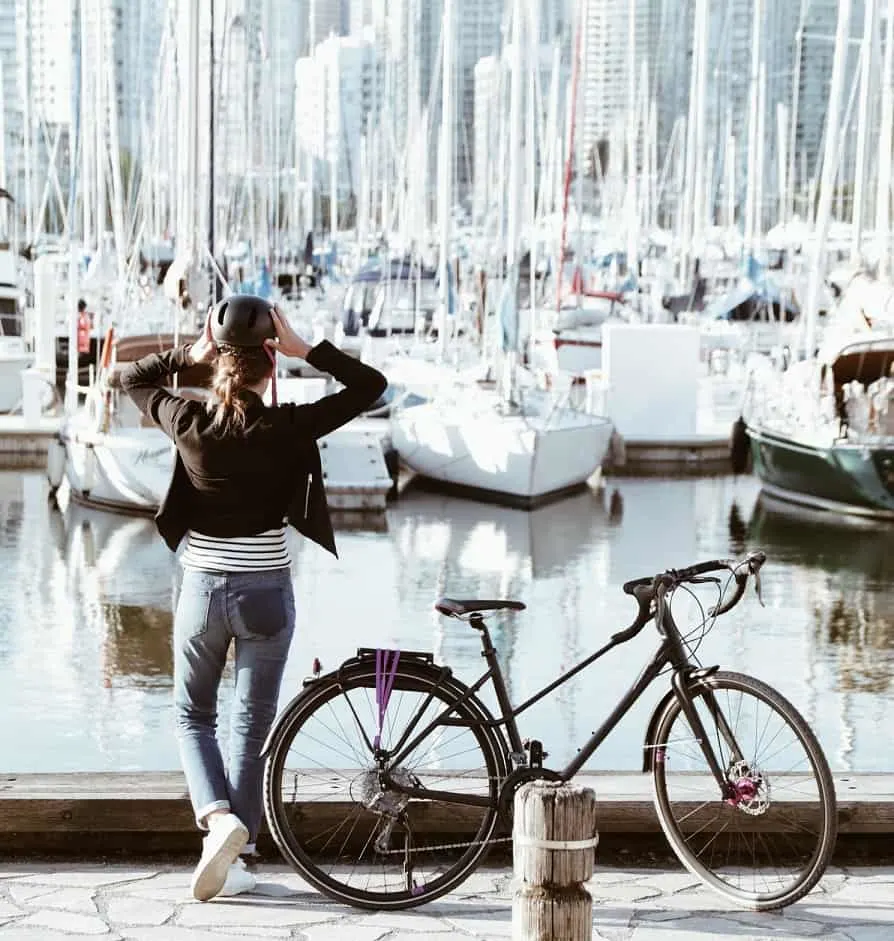
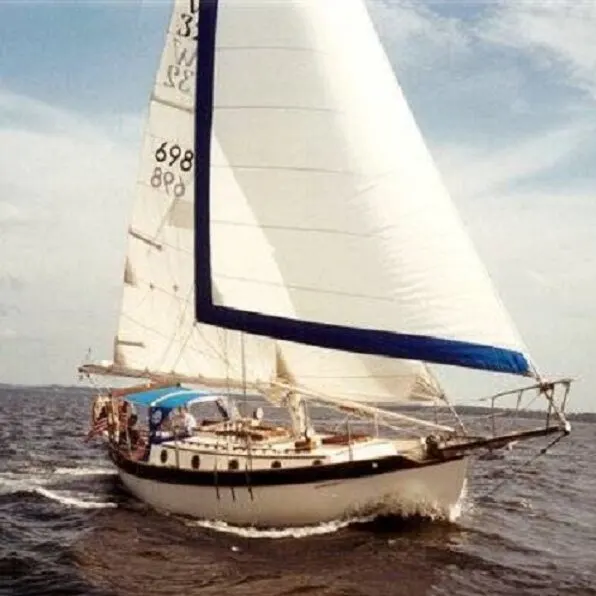
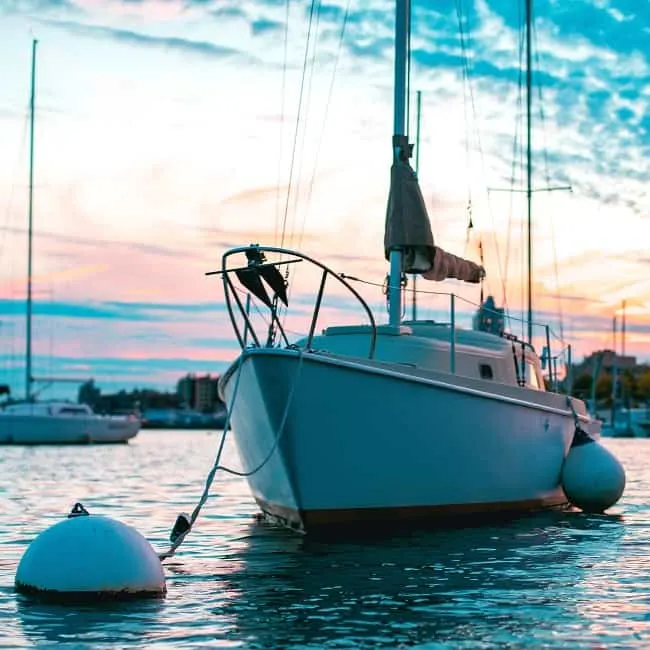
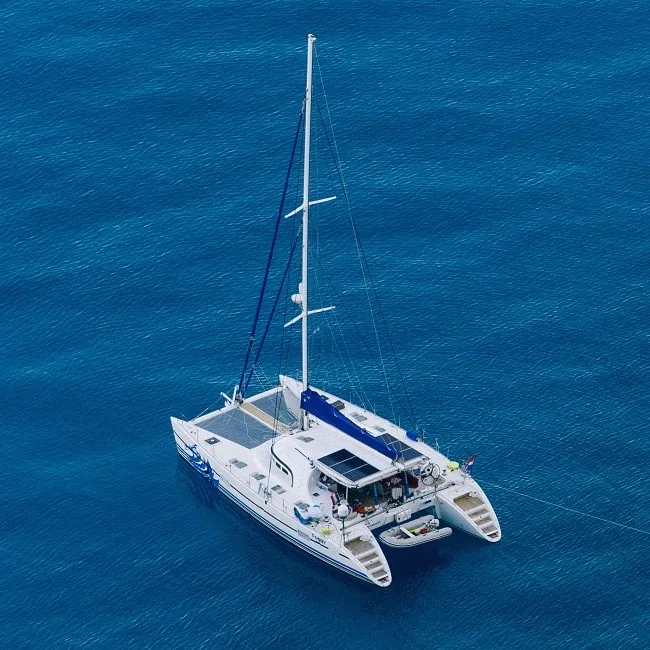
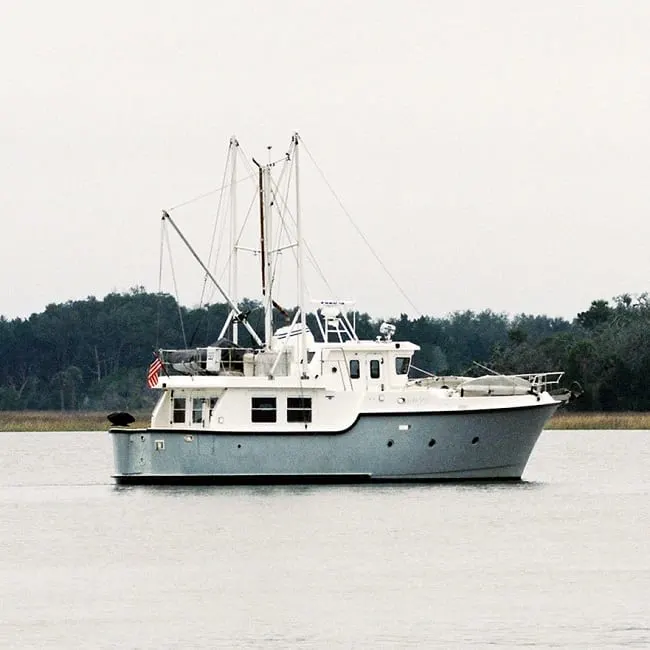
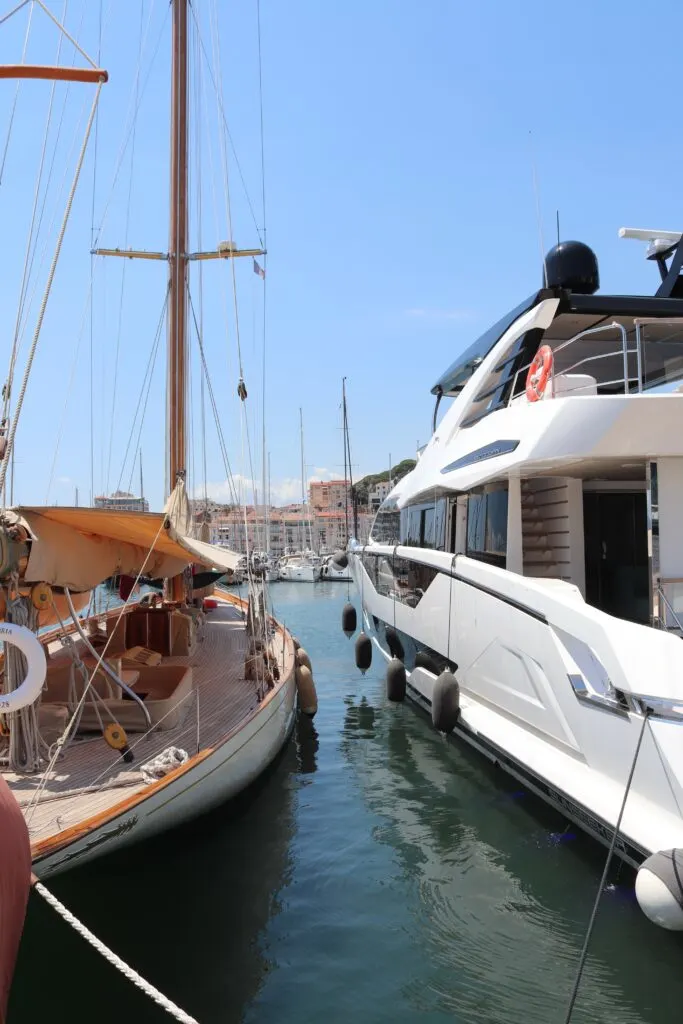

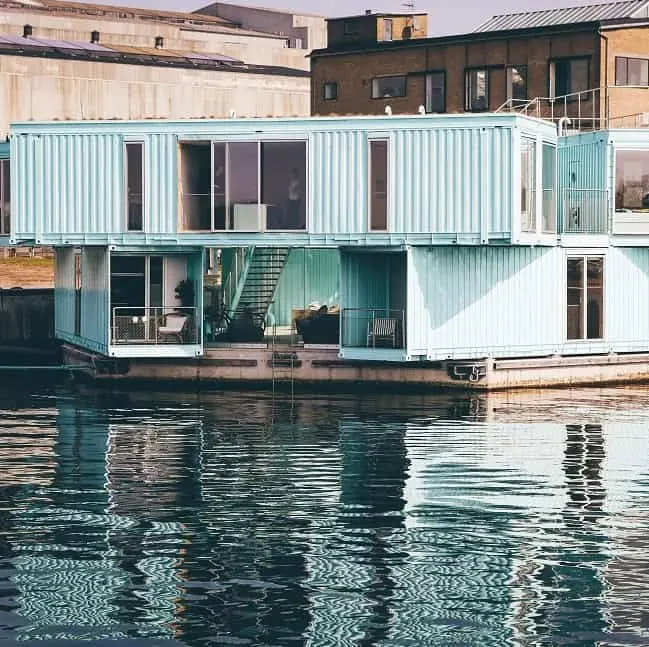
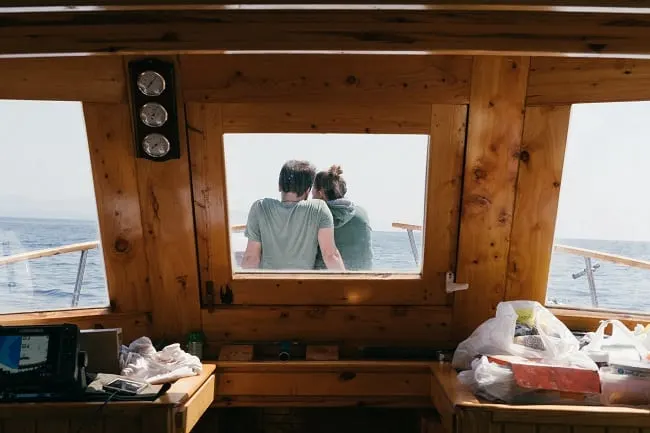
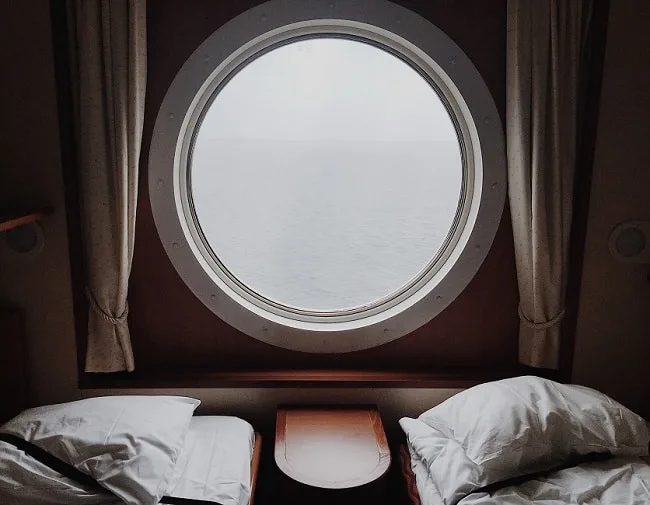
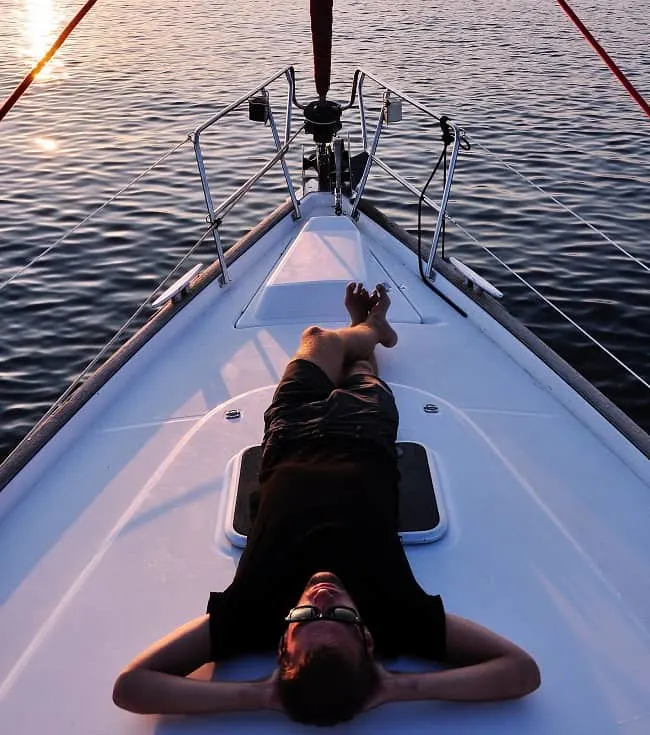
Thom Howard
Friday 8th of February 2019
Great article!
I'd consider adding the Catalina 42 to the list. It has one of the best two or three cabin layouts I've seen. I've got a Catalina 34 right now, which is also nice. But, when I sail off down the coast it will probably be in the 42.
Fiona
Thursday 14th of February 2019
Great suggestion! Thanks Thom.
John Howard
Monday 19th of March 2018
If there is anything I have learned from living in the subtropics, it would be the benefits of a hard dodger or pilot house. When you are young and salty you may not deem this important, but a roof over your head that does not flap and leak will make life on the hook or line much more enjoyable whatever your age. We have owned may sailboats over the years and most were open cockpit with some sort of canvas dodger. When we acquired "Horizon", a Morgan OI41 ketch, I constructed a curtain sided pilot house that encompassed the entire cockpit and includes the mizzen mast. Maybe the years in open cockpit boats have baked my brain, but the trade off of cool, dry comfort more than makes up for the additional windage and weight.
Fiona
Wednesday 21st of March 2018
We couldn't agree more! They're wonderful in higher latitudes also. Certainly better bang for your buck than replacing canvas every 10 years. Thanks for sharing John!
Fuzzy
Friday 16th of March 2018
I'd suggest adding the Westerly bilge-keelers. For example, the Centaur has quite a lot of below-decks room for a 26-footer, and it's built like a tank. And Westerly made boats in a good variety of lengths.
Robin
Sunday 18th of March 2018
Thanks for the suggestion! We'll be sure to include this in our list.